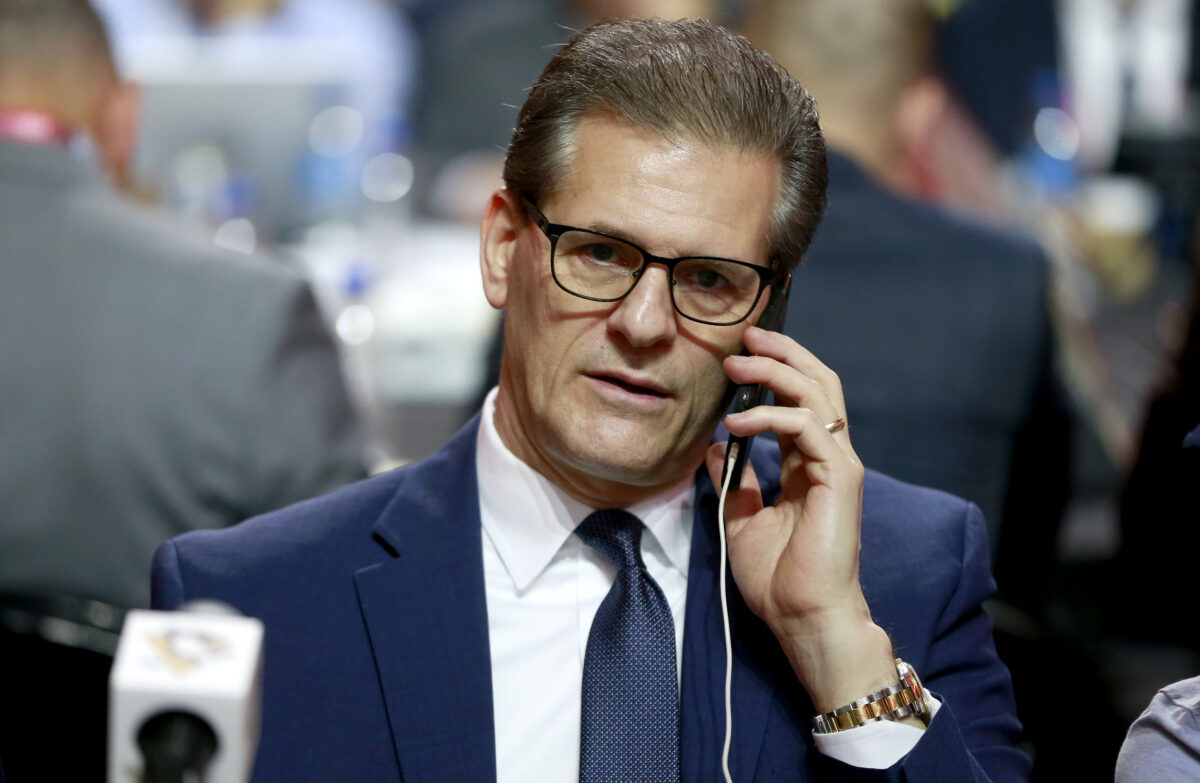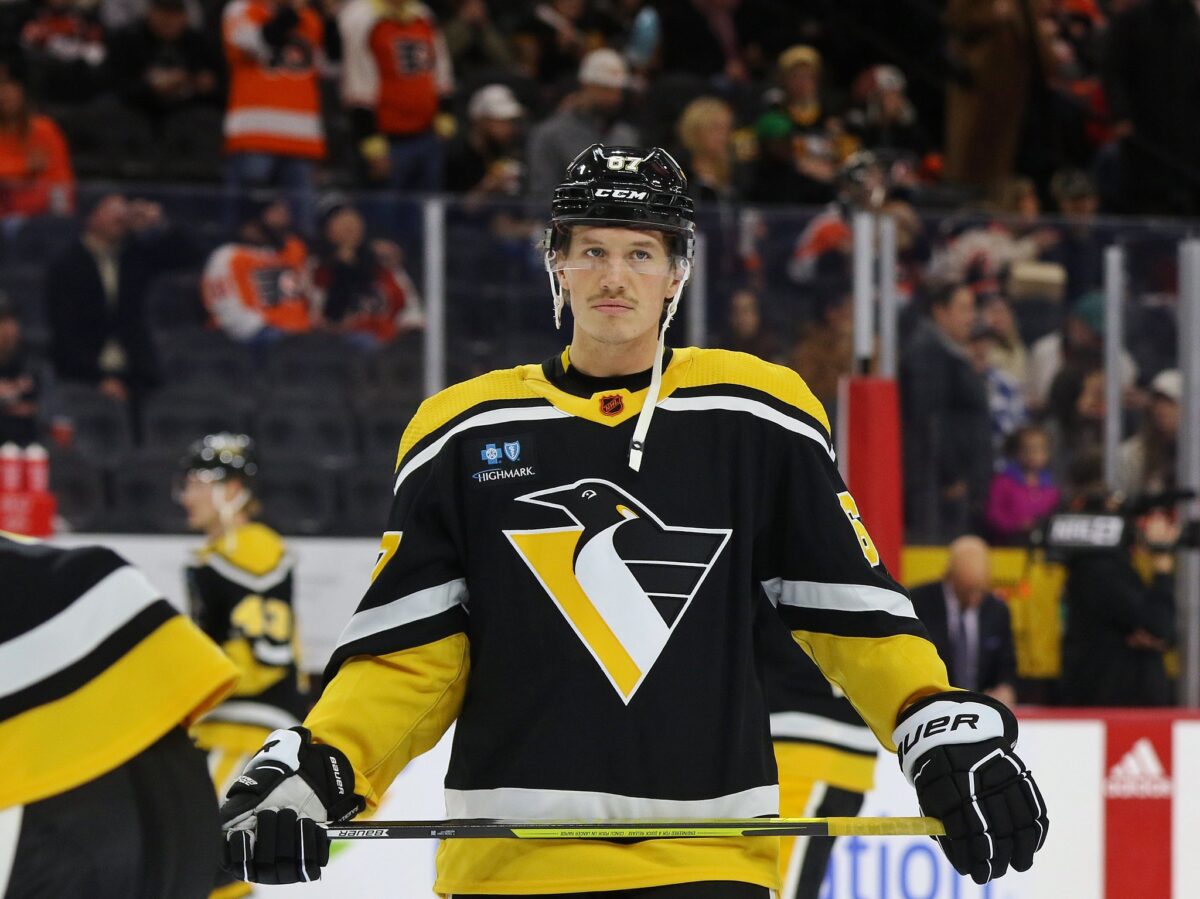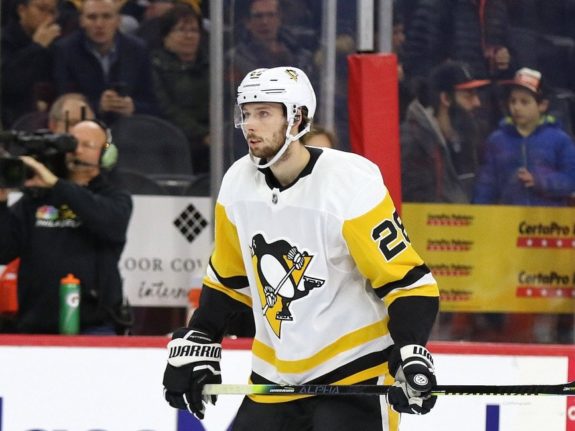Over a total of seven seasons, from 2014 until his resignation in 2021, the Pittsburgh Penguins‘ front office was blessed to be led by one of the top managerial minds in the history of the game. Jim Rutherford, himself a former player with the Detroit Red Wings, Penguins, Toronto Maple Leafs, and Los Angeles Kings, was brought into the management sphere with the Hartford Whalers/Carolina Hurricanes organization in 1994. He quickly became one of the best general managers (GM) in the NHL, and he is the proud architect of three Stanley Cup-winning teams.

Throughout his managerial career, Rutherford cultivated a reputation as one with the ability to orchestrate the perfect deal, whether at the deadline or in the offseason. As GM of the Hurricanes, he acquired the fourth-overall draft pick (Andrew Ladd) from the Columbus Blue Jackets for two picks, a 2004 first-rounder (Alexandre Picard) and a 2004 second-rounder (Kyle Wharton). He picked up future hall-of-famer Mark Recchi from the Penguins in 2006, the year the ‘Canes went on to win the Stanley Cup, with both Ladd and Recchi playing key roles in a dominant playoff run. He continued that success when he moved on to take over as GM of the Penguins, bringing in players like Connor Hall and Ron Hainsey, critical pieces to the Penguins’ back-to-back titles in 2015-16 and 2016-17.
Although he stepped down from the role in 2021, his successor, Ron Hextall, has seen similar initial success, continuing the legacy and keeping the winning tradition alive. However, the events of this season have called into question whether some of those deals have been worth it long term, as the Penguins are struggling in the standings and with the salary cap.
Long-Term Contracts Being Re-Evaluated
The Penguins’ salary cap history has been previously documented. Last offseason, they struggled to offload salary as they found themselves a fill $1 million over the cap. In fact, each time the salary cap was calculated — last season’s upper limit was $81.5 million — they exceeded it. They alleviated some of the pressure through demotions, sending players on more complex deals to the American Hockey League (AHL). However, they also took on or created deals that complicated their relationship with the cap further. When they acquired Rickard Rakell at last season’s deadline, many assumed he was a mere rental player, as he was set to become an unrestricted free agent (UFA) and his former team, the Anaheim Ducks, were firmly eliminated from playoff contention.

Rakell proved a valued addition to the Penguins’ roster. In 19 games with Pittsburgh in 2021-22, he scored four goals and added nine assists for 13 points, and added much-needed stability and scoring further down their lineup. Hextall’s acquisition of Rakell was initially deemed a success, as Rakell’s contract clocked in at a very cap-friendly rate. He impressed management as the regular season turned to the playoffs, earning a new six-year, $30 million contract beginning this season.
The Penguins may have felt it necessary to lock down a pending UFA who could potentially replace Evgeni Malkin, given that the Russian superstar was mulling over entering free agency at the time. Along with Rakell, Malkin ultimately re-signed a long-term deal to remain in the Steel City, as did other highly sought after free agent Kris Letang.
Related: Pittsburgh Penguins Sign Rickard Rakell to 6-Year Contract
Malkin’s new deal is four years and $24.4 million, and Letang’s is six years and $36 million. When the math is done, those three players are tying up approximately $17 million in average annual value (AAV) and the team’s performance this season has resulted in the re-evaluation of those contracts. The Penguins remain a mere rounded $80,000 below the cap.
Offseason Moves Haunting Penguins Down Stretch
As this season’s deadline passed, the Penguins found themselves in New York to take on the Rangers on March 18 in a matchup of two of the league’s modern rivals. The weaknesses that critics had been pointing out all season were on glaring display in a crushing 6-0 defeat. If part of Hextall’s offseason plan was to rebuild the defence corps, he hasn’t succeeded. New arrivals Jeff Petry and Jan Rutta have failed to gel with the team in any significant manner and have both missed time with injury. Marcus Pettersson has developed into an effective defenceman, but only after Hextall tried and failed to deal him away.

On the opposite end of the spectrum, Brian Dumoulin has become a worthy trade candidate, and thus became seemingly the only defenceman Hextall didn’t attempt to trade. Instead of doing the smart thing and offloading his contract at the 2023 Trade Deadline, he brought on an insignificant Mikael Granlund instead. (From “Penguins’ ill-fated trip to New York confirms they’re no better after trade deadline” Rob Rossi, The Athletic. 19/03/2023).
Given the recent successes of the Penguins franchise and their current state of play, Hextall’s moves during the offseason have not panned out as expected. The Penguins are headed for their first real crossroads since the arrival of Sidney Crosby in 2005, and if the longest playoff streak in North American professional sports ends this season, the moves made before the start of 2022-23 will be the first parts of the team put under the microscope.